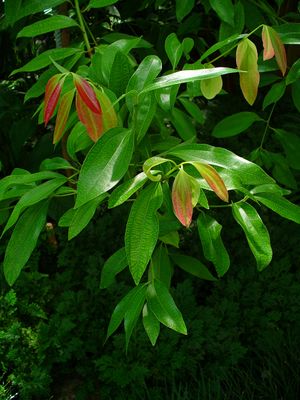Note: This is a project under development. The articles on this wiki are just being initiated and broadly incomplete. You can Help creating new pages.
Difference between revisions of "Cinnamomum verum - Darusita"
(Created page with "thumb|right|''Darusita'', '' Dalchini'', ''Cinnamomum verum'' Category:Herbs Darusita is a small evergreen tree 10–15 meters tall, na...") |
(No difference)
|
Revision as of 12:44, 14 October 2016
Darusita is a small evergreen tree 10–15 meters tall, native to Sri Lanka and South India. The bark is widely used as a spice due to its distinct odour. In India it is also known as "Daalchini". The leaves are ovate-oblong in shape, 7–18 cm long. The flowers, which are arranged in panicles, have a greenish color, and have a distinct odor. The fruit is a purple 1 cm berry containing a single seed.
Cinnamon or Darusita Benefits
Darusita (Dalchini) is a herb traditionally used by many ancient cultures. It is indicated for a variety of ailments including gastrointestinal problems, urinary infections, relieving symptoms of colds and flu and has remarkable anti-fungal and anti-bacterial properties. Some studies have shown that Cinnamon helps people with diabetes metabolise sugar better.
Cinnamon bark is used for gastrointestinal (GI) upset, diarrhea, and gas. It is also used for stimulating appetite; for infections caused by bacteria and parasitic worms; and for menstrual cramps, the common cold, and the flu (influenza).
